I need to start this blog with a disclaimer. When I titled this article “Piano Repertoire” by Wolfgang Amadeus Mozart, I was well aware that Mozart didn’t perform and compose music for what we identify as a modern piano today. When he was born, the household instrument of choice was the clavichord, which was starting to gradually replace the harpsichord in such settings. That particular instrument touches the strings with slips of metal and is capable of slight dynamic variations. But the clavichord has a very tiny sound and the best place for it is in the living room and not the concert hall.
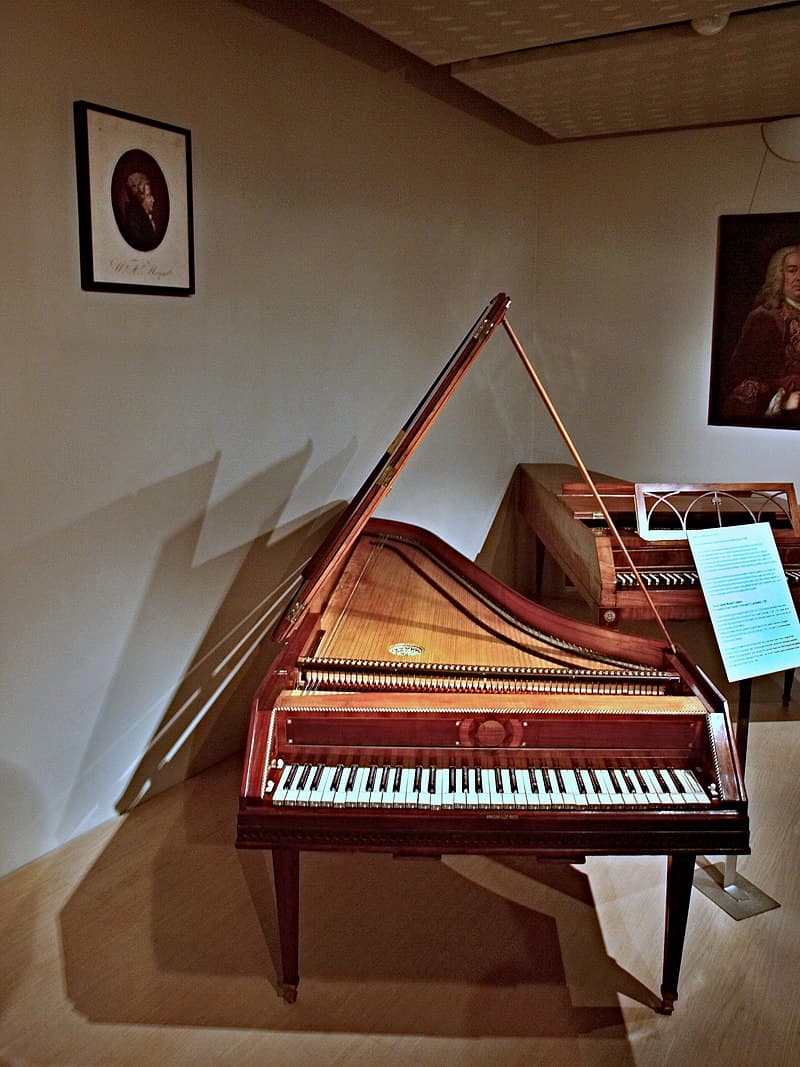
Fortepiano played by Mozart, 1787
Little Mozart had his own small clavichord that he used during his travels, but in 1777 Mozart gave us a unique window into the world of the fortepiano builder Johann Andreas Stein and his approach to piano design. As the name implies, this particular instrument could play both loud and soft, and the fact that it could play very quietly was actually one of its biggest selling points. The fortepiano continued to develop explosively, but the instruments Mozart knew towards the end of his life in 1791 were still a far cry from the capabilities of a modern piano. Most of us, however, don’t have access to historical keyboard instruments, and thus we play Mozart on modern pianos. Personally, I don’t see a problem with that or with calling this blog “Piano Repertoire” because as a musicologist remarked, “Wolfgang Amadeus Mozart writes the most perfect, the most beautiful music in any medium.”
Wolfgang Amadeus Mozart: Piano Sonata No. 9 in D Major, K. 311
When Wolfgang Amadeus Mozart and his mother were on their way to Paris in 1777 they temporarily resided in the city of Mannheim. The composer rubbed shoulders with some of the biggest musical names of that time, and he as always was looking for employment. Mozart writes to his father, “after dinner, Herr Vogler sent for two pianos of his, which were tuned alike, and also his wearisome engraved sonatas. I had to play them, while he accompanied me on the other piano. At his urgent request, I sent for my sonatas also. Before dinner he had scrambled through my sonata at sight…his fingering is miserable and all the runs downwards with the right hand he makes with the first finger and thumb!”
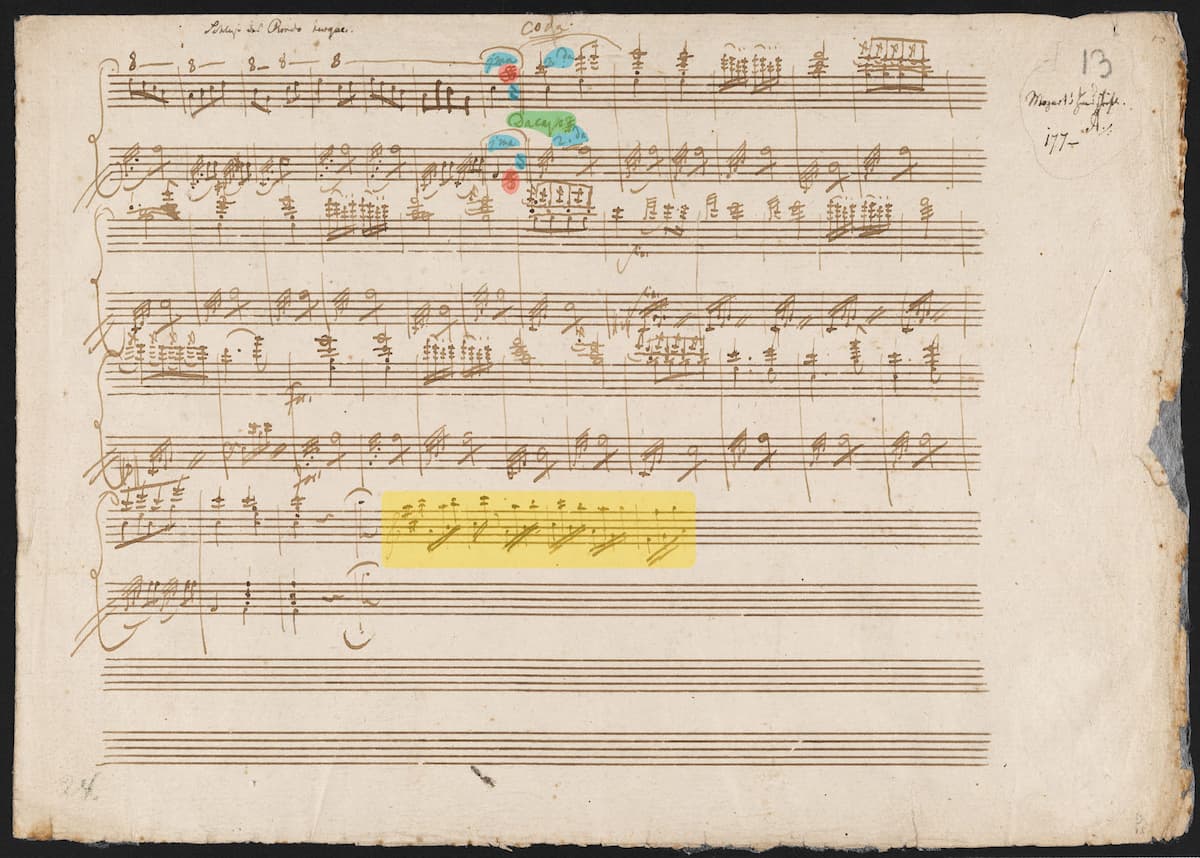
Mozart K. 331, Alla Turca
The sonata performed on that occasion was K. 311, which Mozart had written in response to visiting the Johann Andreas Stein pianoforte workshop. As he writes to his father, “This time I shall begin at once with Stein’s pianofortes… When I strike hard, I can keep my finger on the note or raise it, but the sound ceases the moment I have produced it… His instruments have this special advantage over the others in that they are made with escape action. Only one maker in a hundred bothers with this. But without an escapement, it is impossible to avoid jangling and vibration after the note is struck. When you touch the keys, the hammers fall back again the moment after they have struck the strings, whether you hold down the keys or release them.”
Wolfgang Amadeus Mozart: Piano Trio in E-flat Major, K. 498 “Kegelstatt”
During a childhood visit to London in 1765, Mozart wrote a set of six sonatas for the keyboard with the accompaniment of violin or flute and dedicated them to Queen Charlotte. In the earliest printed edition, Mozart allowed for the optional participation of the cello, and he took his first steps toward the composition of piano trios. Some writers have suggested, “the classical piano trio comes of age in Mozart’s hands, as the full transition from the harpsichord to pianoforte coincided almost perfectly with Mozart’s life.” While the piano dominated the musical discourse in his early attempts, in his seven mature piano trios Mozart balances the ensemble and created “a grouping that would soon become a centerpiece at the heart of the chamber music literature. His most famous piano trio nicknamed “Kegelstatt” roughly translated as bowling alley was composed for his student Franziska von Jacquin. It was heard in August 1786 in the Jacquin residence and featured Mozart on the viola, Anton Stadler on the clarinet, and Franziska on the piano. When it comes to Mozart’s piano repertoire, this trio is an absolute staple.
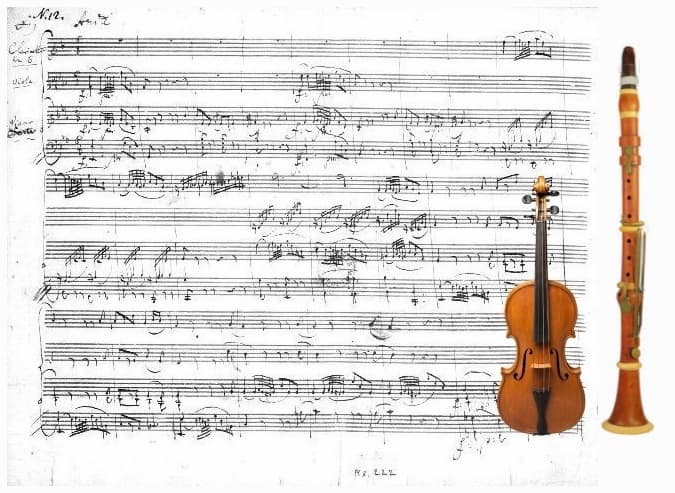
Kegelstatt Trio
Wolfgang Amadeus Mozart: Piano Concerto No.12 in A major, KV 414
When Mozart attempted to formally resign from the services of Hieronymus von Colloredo, his request was initially refused. But Mozart kept returning with additional petitions and memoranda until Count Felix Arco lost his patience and “delivered a swift kick to Mozart’s backside.” And that was it for Mozart’s employment in Salzburg. He was finally free to pursue his dream of becoming a freelance artist in the Imperial city of Vienna. No longer relying on a regular income, Mozart began to participate in subscription concerts, introducing himself as a pianist and composer to the Viennese public. In the process, he crafted some of the most divine concertos in the piano repertoire. For his debut concerts of 1783, Mozart composed three piano concertos, describing their character as “a happy medium between what is too easy and too difficult.” The lightly scored Concerto No. 12, K. 414, foreshadows the musical effects associated with his mature compositions, and having to generate income he advertises it as a work “from which connoisseurs and amateurs can derive enormous satisfaction.” The 27 piano concertos by Mozart are without doubt at the core of his piano repertoire.
Wolfgang Amadeus Mozart: Violin Sonata No. 21 in E minor, K. 304
Wolfgang’s father Leopold Mozart has courted a bit of controversy among his biographers. He was either seen as “a man of broad cultural achievement who was difficult to please and at times intractable who deeply cared for his son but was frustrated in his ambition to secure for Wolfgang a worldly position appropriate to his genius.” Alternately he is described as “excessively manipulative, intolerant, and autocratic, resulting in considerable hardship for his children.” We know for sure, however, that he was a celebrated author and pedagogue, publishing a highly successful violin method in 1756. And we also know that he used this textbook to instruct his son in the technical rudiments of playing the violin.
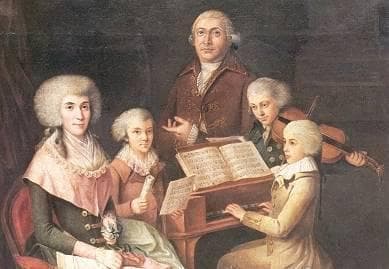
Mozart playing clavichord and Linley playing the violin
As expected, Wolfgang took to the violin like a fish to water, and Leopold hinted that he might have become the greatest violinist in Europe. Wolfgang Amadeus Mozart wrote about 35 sonatas for keyboard and violin, including some that were left unfinished. He wrote the first when he was six and the last in 1788, three years before his death. Only one is in a minor key, the Sonata in E minor, K. 304, written in 1778 in Paris. “The minor tonality gives this music a dignity and gravity unusual in the sequence of his violin sonatas, and though this music was composed when Mozart was only 22,” it is universally regarded as one of his finest chamber works.
Wolfgang Amadeus Mozart: Piano Sonata No. 11 in A Major, K. 331
In all, Wolfgang Amadeus Mozart composed eighteen mature piano sonatas. One of my all-time favorite pianists, Ivo Pogorelich, writes, “It is common for enthusiasts to declare that this or that passage is “divine” or “heavenly,” that Mozart’s music is “not of this world”… One constantly comes across references to the element of serenity, to that which is graceful, soaring yet touched by a light breath of melancholy, and marked by longing for things spiritual… The profoundest and at the same time the most sublime expression of things human, worldly, and universal – i.e. belonging to the world of Mozart, his music is never manifesto nor self-affirmation, it contains no struggle. It keeps to the events on the stage, tracing the characteristics and evolution of its objects, thereby setting itself apart from its creator, who gives himself over entirely to his task, forgetting himself.” K. 331 is one of Mozart’s most frequently performed sonatas, and a highlight in his piano repertoire. It dates from 1783 when the composer was working on his opera Die Entführung aus dem Serail. This could well explain the appearance of Turkish elements in both the opera and the Sonata. And without doubt, the famed “Marcia alla Turca” is certainly one of the most famous pieces in Mozart’s piano repertoire.
Wolfgang Amadeus Mozart: Piano Quartet No. 1 in G minor, K. 478
A good many writers consider Mozart’s Piano Quartet No. 1 in G minor, K. 478, the first major piece composed for piano quartet in the chamber music repertoire. It was actually commissioned by the publisher Franz Anton Hoffmeister, who was looking for ensemble music that also included the viola. Mozart, of course, loved that instrument when he himself performed chamber music. And once you add the viola to the traditional piano trio you arrive at the piano quartet. Hoffmeister ordered three piano quartets, but after he received the first piece, he cancelled the order. He had intended the compositions for the Viennese amateur market, but Mozart had not. “The technical demands on the performers, not to mention the complexity of the music itself, resulted in poor sales.” An article in a Weimar musical journal concluded, “this work as performed by amateurs could not please. Everybody yawned with boredom over the incomprehensible tintamarre of 4 instruments, which did not keep together for four bars on end, and whose senseless concentus never allowed any unity of feeling; but it had to please, it had to be praised!
What a difference when this much-advertised work of art is performed with the highest degree of accuracy by four skilled musicians who have studied it carefully.” For me personally, it is one of the most stunning and moving compositions in Mozart’s entire piano repertoire.
Wolfgang Amadeus Mozart: Sonata for Two Pianos in D Major, K. 448
In order to generate extra income, Wolfgang Amadeus Mozart gave music lessons to the sons and daughters of affluent Viennese families, among them Josepha von Auernhammer. Josepha was a highly capable pianist who wanted to become a professional musician in order to escape a life of predestined domesticity. She also fell head over heels in love with her teacher, and Mozart went to great lengths to dissuade local rumors suggesting a possible affair. He described her “as fat as a farm wench,” and that “she perspires so much that she makes me feel sick.” Although he described the young Miss as a “monstrous horror,” he was clearly impressed by her musical abilities. “She fills one with marvel when she plays. All that she lacks is a very fine singing style in the cantabile passages.” To advertise his services as a composer and performer, and to simultaneously promote his teaching proficiency, Mozart composed the Sonata for 2 Pianos, KV 448 for a public performance featuring himself and his talented charge. The work radiates music of pure joy, simultaneously graceful, songful, elegant, and virtuosic. Although it is the only Sonata for Two Pianos in Mozart’s piano repertoire, it is a true masterwork.
Wolfgang Amadeus Mozart: Quintet for Piano and Winds in E flat Major, K. 452
Wolfgang Amadeus Mozart wrote to his father in March 1784, “On the last three Wednesdays of Lent, I have planned three subscription concerts. For these concerts, I already have 100 subscribers and expect another 30 shortly…I shall later give private concerts in aristocratic salons or in one of the city’s theaters.” The Quintet in E flat major for piano, oboe, clarinet, horn, and bassoon, K452, first sounded on 1 April with Mozart performing at the piano. As the composer wrote to his father a couple of days later, “I consider it the best work I have ever written.” Mozart’s only quintet with piano features the unusual combination of oboe, clarinet, horn, bassoon, and piano. I believe it was a difficult task, as “single winds, as opposed to pairs, pose problems of blend so he explores the numerous different permutations of instruments to produce different sonorities, and uses short phrases and motifs for variety.” It was a difficult task as Mozart relied on a series of sketches to work out the details of the composition. In the end, however, Mozart’s marvelous achievement was even recognized by Beethoven, who greatly admired the work.
Wolfgang Amadeus Mozart: Piano Sonata No. 18 in D Major, K. 576
The piano repertoire of Wolfgang Amadeus Mozart is vast and varied. I feel I haven’t even scratched the surface. I certainly hope to have given you some impulses for further exploration, however. Maybe, Mozart’s last sonata of them all, the Piano Sonata in D Major, K. 576 is a fitting conclusion for this blog. Mozart was on a trip to Berlin and Potsdam when Frederick William II, King of Prussia commissioned him to write some string quartets and “six light or easy sonatas” for his daughter. Mozart completed only one sonata, but it is anything but easy. A critic writes, “It is an effortless amalgam of the learned and popular, marrying an apparently light, convivial tone with dazzling contrapuntal craft.” It is still a very difficult work to play today, but probably it never presented any real challenges to Mozart. But one thing for sure, had Mozart lived for another twenty years, he would have dominated the piano repertoire for decades to come.
For more of the best in classical music, sign up to our E-Newsletter

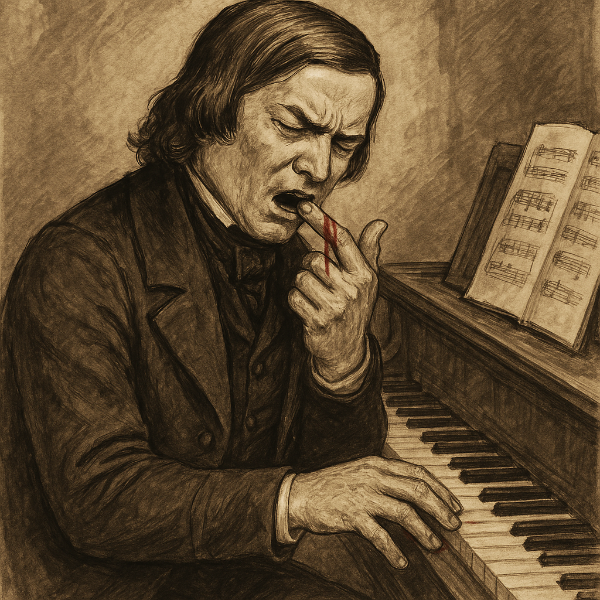


I cannot believe that the 16th piano sonata was not among the ones cited. I play it over and over every day. It is so melodic with a hint of a minor key. It is so beautiful. It seems shorter than the others, perhaps that is why it did not make it. As you can see by my email address, I love Mozart dearly; he is part of my daily life. When I am out in public, I will take any Mozart music over what has been chosen any day.
#16, although absolutely charming, is a minor Sonata. Having taught for OVER 50 years, it is the FIRST introduction to Mozart’s Sonatas. It is on the Grade 8 Syllabus of the Royal Conservatory of Music & has been forever. It is a charmer. Teaches melodic line, how to master runs, both hands, balance of hands.
Please explore some of the more advanced ones to find the charm there too.
Keep playing though. That, above all, is the most important thing.